With their crispy pastry outside and soft inside, Garibaldi biscuits are a much-loved tea time treat. Buttery dough encases soft currants (or raisins or sultanas), it’s pressed together and baked until golden.
I love a good fruity biscuit recipe like these homemade florentines or these ever-popular buttery sultana cookies.
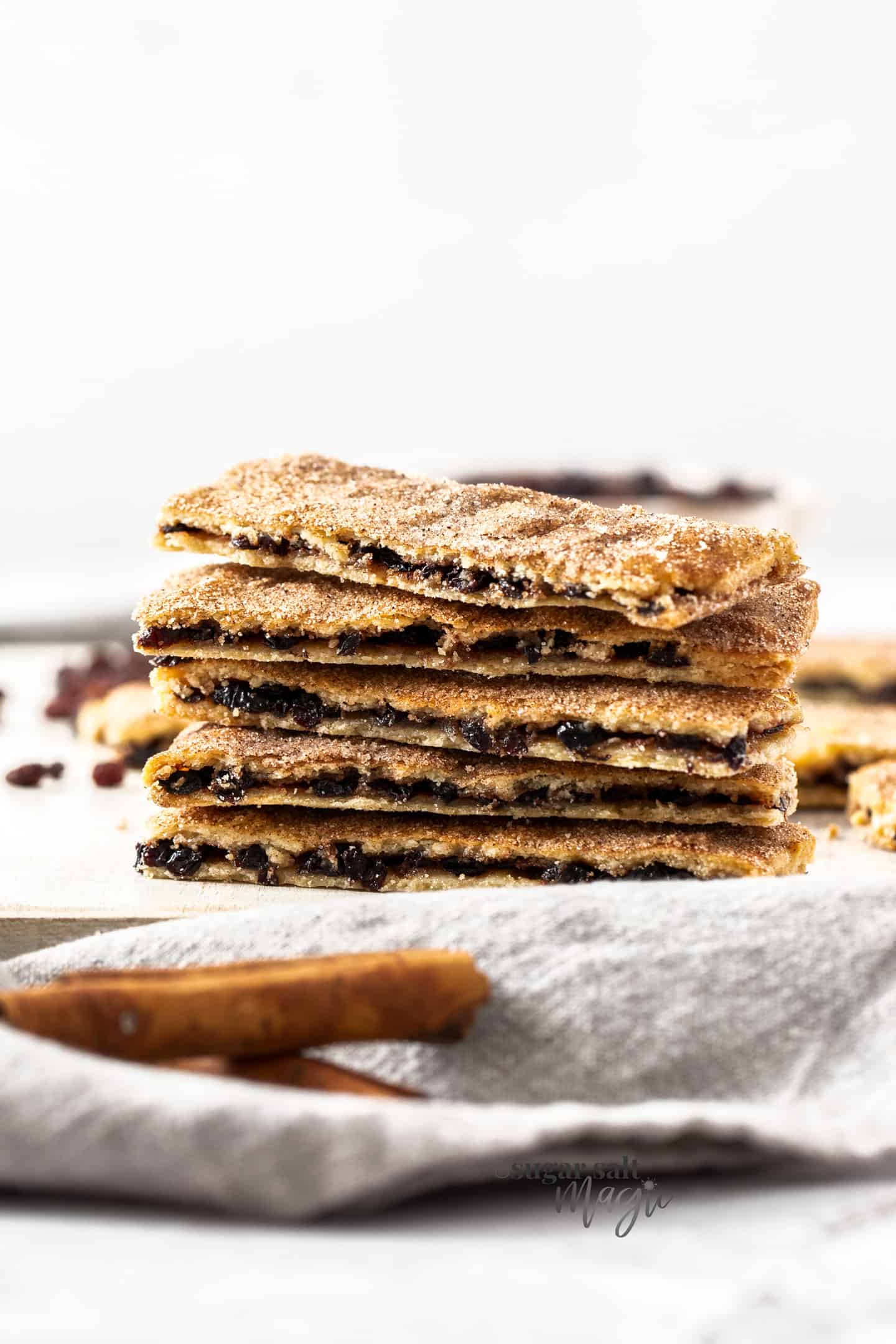
Why are they called Garibaldi Biscuits?
Named after an Italian general named Giuseppe Garibaldi (srce: Wikipedia), there isn’t a lot of information on the history of these biscuits. They were first created in the UK over 150 years ago and have since made their way around the world in different forms.
In Australia they’re sold as “Full O’fruit” and in New Zealand “Fruitli”, while the US had a version called “Golden Fruit”.
Loved the world over, you may have heard of Garibaldi biscuits referred to as squashed fly biscuits or flies graveyard. Had I known those names before I knew them as Garibaldi’s I probably wouldn’t have tried them though. Not the most appealing of names.
Never fear! There are no flies in these buttery, fruity cookies. The fruit middle is traditionally made with currants but are often made with raisins or sultanas too.
Ingredients
These cookies don’t have too many ingredients and most are pretty common.
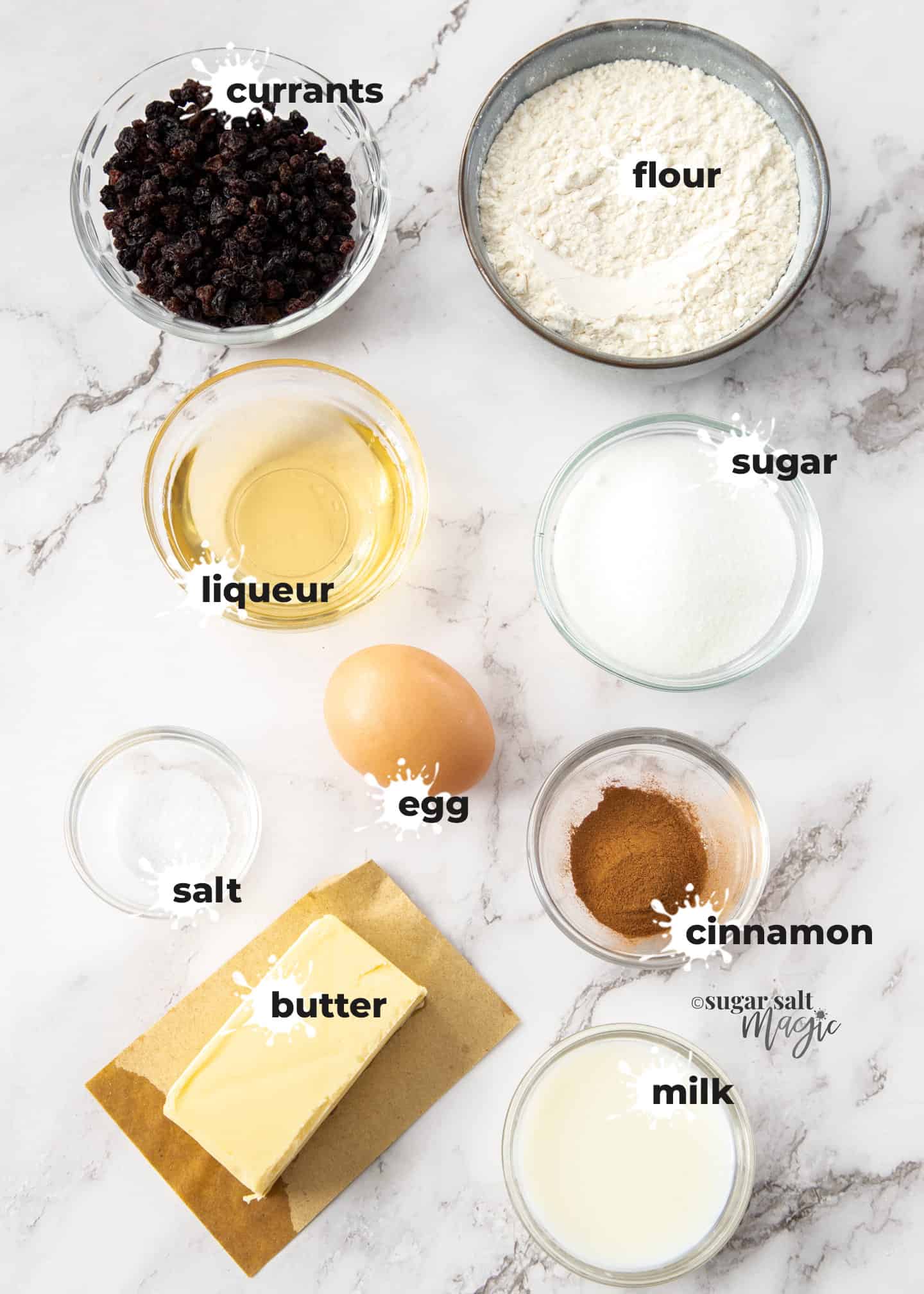
- Flour: Just regular plain or all purpose is perfect for these.
- Sugar: I like caster sugar for this one as it beats in easily and provides a nice coating for the top that gets all crispy but regular white granulated will work.
- Currants: These are like miniature raisins. If you can’t get currants, raisins or sultanas will work too.
- Liqueur: Traditionally you would use brandy to soak the dried fruit before making garibaldi biscuits, but any liqueur will really do the job. I like Frangelico because of it’s flavour and it’s one I always have on hand.
- Salt: All sweet treats benefit by a little dash of salt to intensify the flavours and balance the sweetness.
- Butter: This makes these cookies nice and buttery.
- Cinnamon: Added to the sugar and dusted over the fruit and then over the top of the dough before baking.
- Milk: Just enough to bring the dough together into a rollable dough.
- Egg yolk: Mixed with a dash of water, this is brushed over the top of the dough to give it a golden look.
How to make garibaldi biscuits / squashed fly biscuits
These biscuits are so easy to make and fun since they’re quite different to your regular dough scooping style cookies.
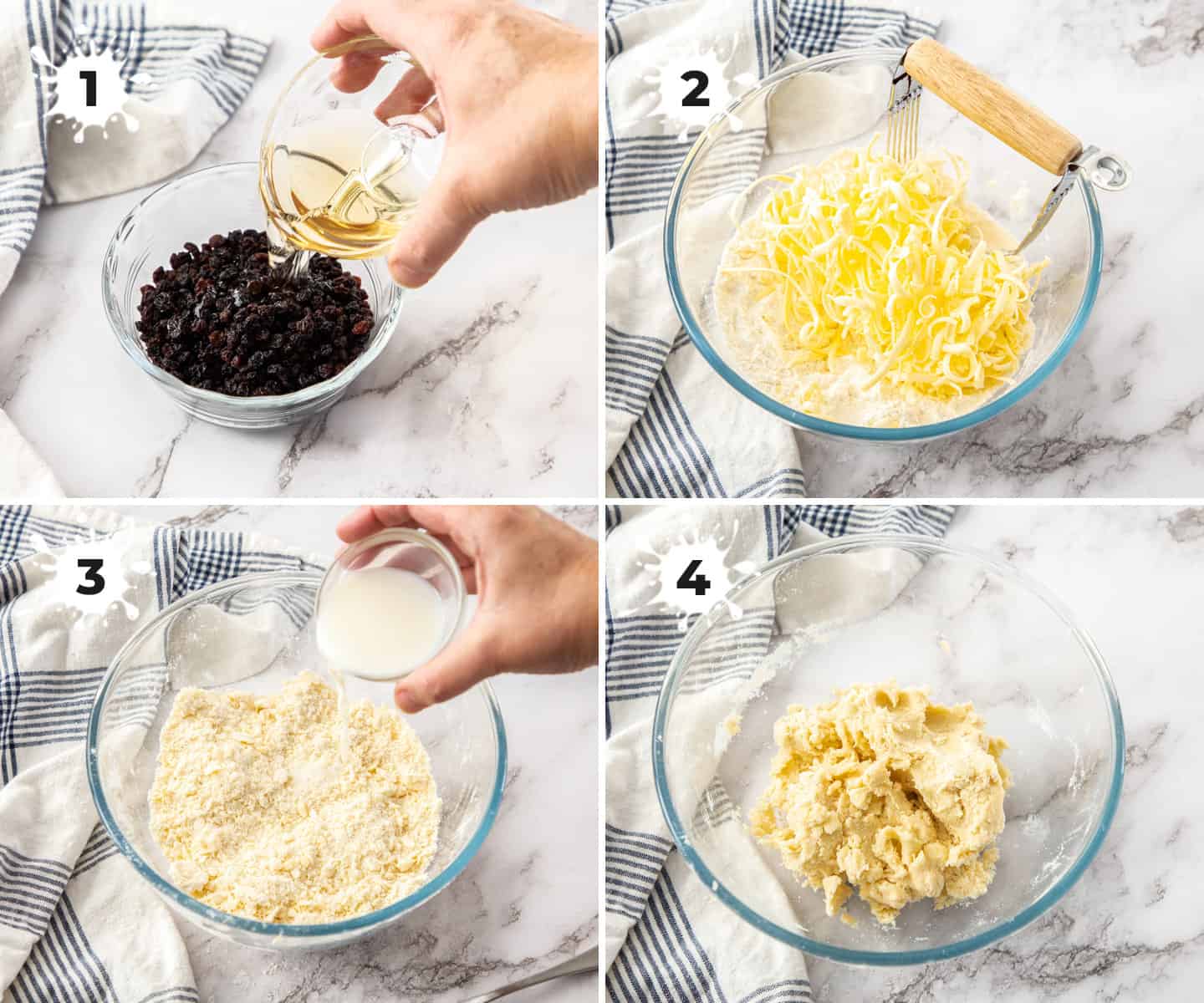
- Start by soaking the fruit in liqueur for half an hour to help plump it up and soften it slightly (photo 1).
- Now combine the dry ingredients before adding grated (shredded) butter (photo 2). Blend that in with a pastry cutter until it’s a bit like lumpy sand.
- Now add the milk (photo 3), to bring it into a clumping dough you can roll out (photo 4).
- Chill the dough for 30 minutes before proceeding.
- Cut the dough into two pieces and roll out the first one. Drain the currants, discarding the liquid and scatter them evenly over the rolled dough.
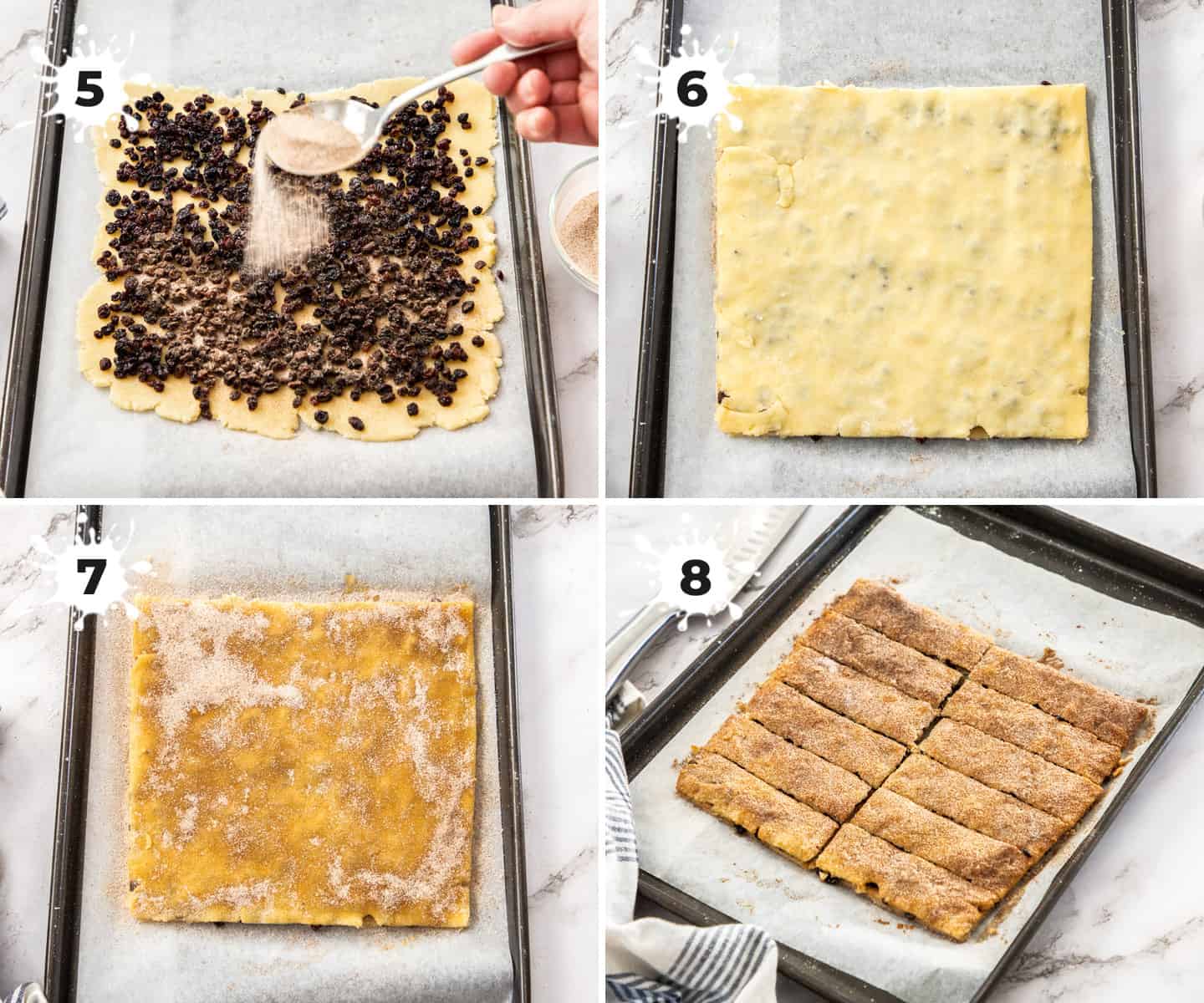
- Sprinkle cinnamon sugar over the currants (photo 5).
- Top with the second layer of rolled out dough and press it down with your hands all over (photo 6).
- Brush the top with egg wash, then sprinkle with more cinnamon sugar (photo 7). Bake.
- When they come out of the oven, immediately slice them into rectangles – without moving them around (photo 8). Let them cool completely to crisp up.
Tips and tricks for perfect garibaldi biscuits
- Only gently blend the flour and butter until the butter is in tiny but still visible pieces. These pieces release steam while baking and make the dough layers lighter and flakier.
- Adding milk: Only add as much as you need. Different brands of flour will absorb different amounts of liquid so start with the 1 ½ tablespoons of milk listed in the recipe and add another ½ tablespoon only if you need it.
- Always weigh your ingredients for best results. A cup measure can be filled many different ways and as a result can have varying quantities of flour. Too much flour equals a dry cookie.
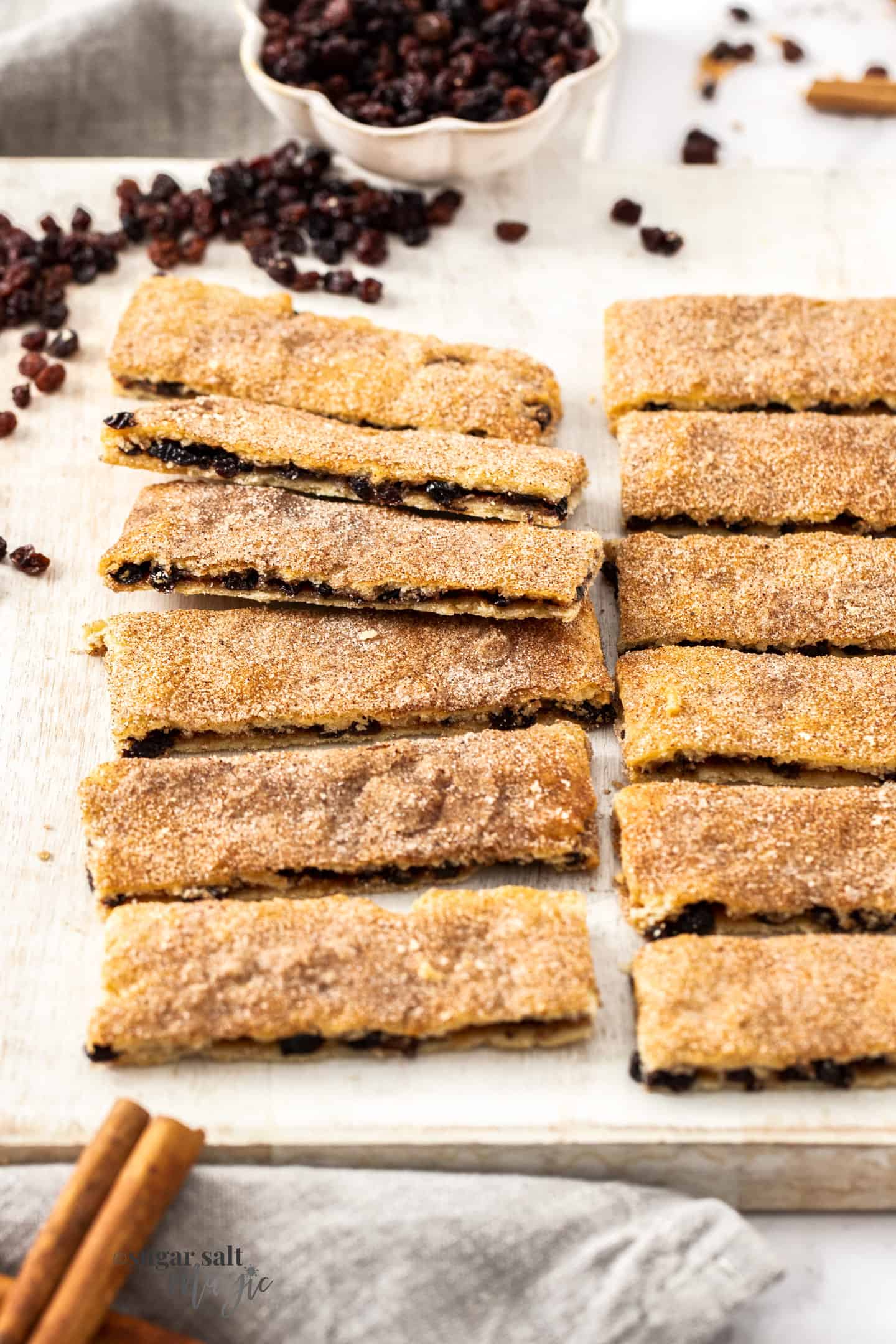
Substitions / variations
One of the things I love about this garibaldi biscuits recipe is the option to change the fruit you use inside. Most dried fruits will work and you can chop large ones into smaller pieces.
Try dried cranberries, dried blueberries and the combo I’m looking forward to trying – Apricot and coconut.
Also, try adding in chopped nuts or chocolate too.
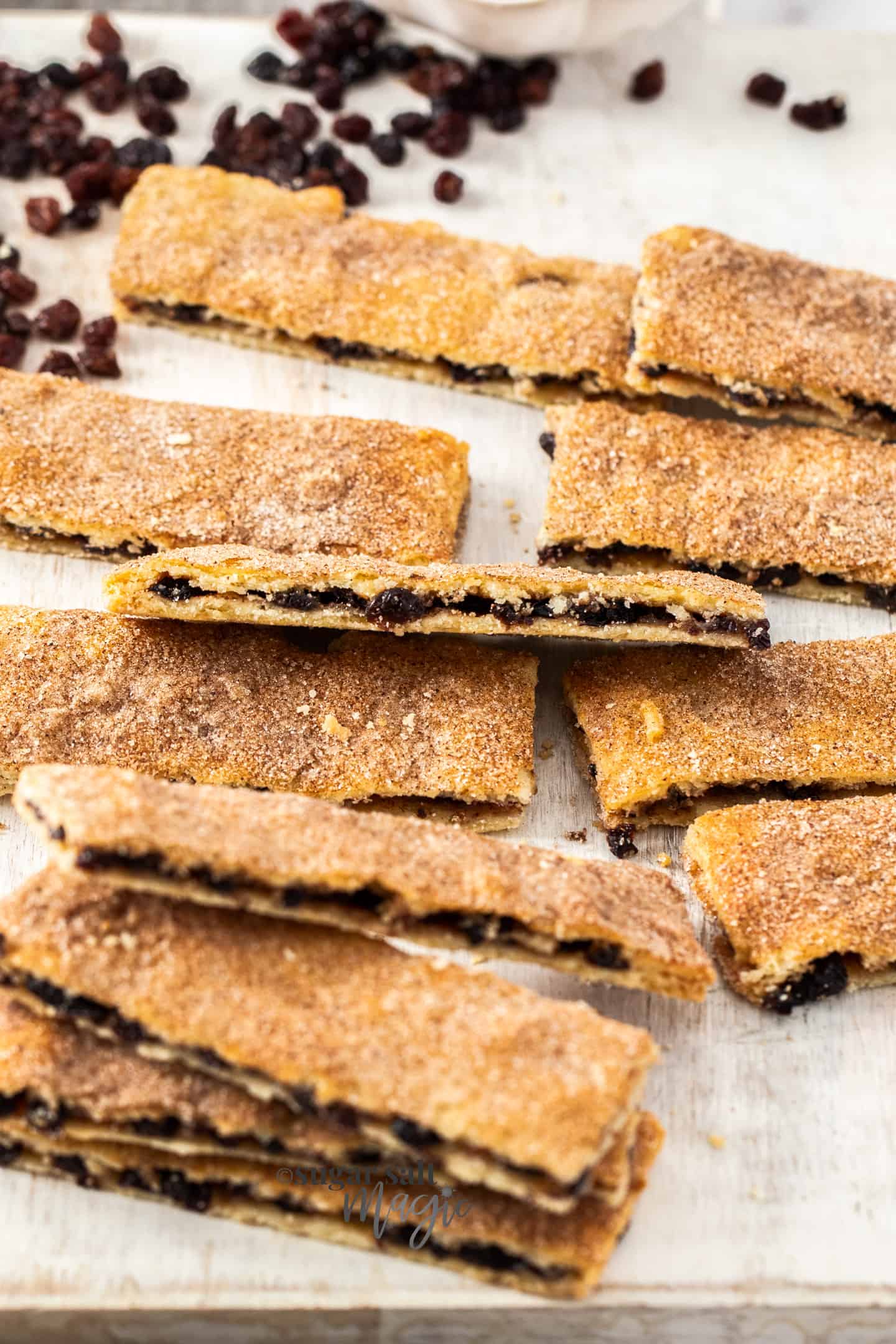
If you try this garibaldi biscuits recipe, please take a moment to leave a rating and comment below. I love hearing from you and it helps other readers too! You can also take a photo and tag @sugarsaltmagic on Instagram.
Never Miss a Recipe!
Get the latest recipes straight to your inbox!
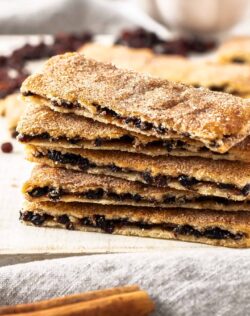
Ingredients
- ⅔ cup currants (105g / 3.7oz)
- ⅓ cup Frangelico liqueur (80ml) (or notes 3)
- 130 g plain (all-purp) flour (1 cup / 4.6oz)
- 65 g caster (superfine) sugar, split in half (⅓ cup / 2.3oz)
- ¼ teaspoon salt
- 85 g unsalted butter, grated and cold (¾ stick / 3oz)
- 1 ½ tablespoons milk, cold (30ml) (notes 1)
- 1 teaspoon cinnamon
- 1 egg yolk, beaten with a dash of water
For best results, always weigh ingredients where a weight is provided
Equipment
- Cookie sheet
Instructions
- In a small bowl, combine the currants and liqueur. Set aside.
- Combine the flour, half the sugar and salt in a medium bowl. Whisk together.
- Add the cold grated butter, and cut it into the flour using a pastry cutter, knife or your fingertips (if using your fingers, be careful not to melt all the butter).
- Use a fork to mix through the milk, then pull the dough together with your hands.
- Flatten out into a rectangle. Wrap in baking paper or plastic wrap and chill for 30 minutes.
- Preheat the oven to 180C / 350F / 160C fan forced. Line a baking tray with baking paper.
- Drain the currants, discarding the liquid. Set aside in a strainer over a dish to drain further.
- In a small bowl, combine the remaining sugar and cinnamon. Set aside.
- Cut the dough in half and, on a lightly floured surface, roll out one half to about 20cm square (8×8 inches) – use the base of an 8 inch tin as a guide. Carefully transfer it to the baking tray.
- Scatter the drained currants over the rolled dough, followed by half the cinnamon sugar.
- Roll out the second piece of dough and lay it over the top. Press down gently all over with your hands and trim off the rough edges of dough.
- Brush the top with the egg wash, then sprinkle over the remaining cinnamon sugar.
- Bake 25-30 minutes or until the top is nice and golden.
- Carefully, use the ends of the baking paper to move the biscuit from the tray to a cutting board. Cut into rectangles, then allow to cool completely.
Notes
- I use a standard Australian 20ml tablespoon (= 4 teaspoons worldwide)
- The currants must soak for at least half an hour so make sure to do this step first.
- Traditionally you would use brandy to soak the currants but I like Frangelico and always have it on hand. A sherry, muscat or even port will do the trick too or a liqueur like Amaretto.
This post may contain affiliate links that earn me a small commission for my referral, at no extra cost to you. Thank you for supporting Sugar Salt Magic.

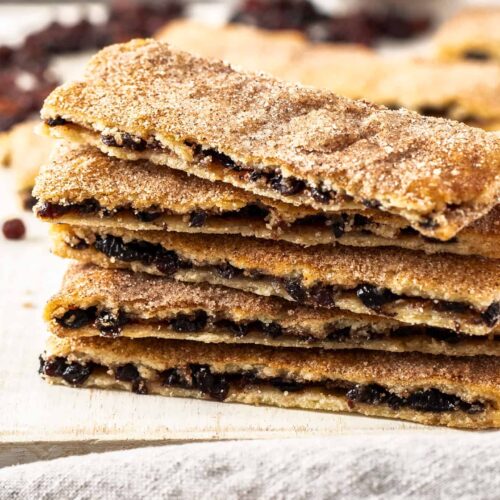


12 Comments on “Garibaldi Biscuits Recipe”
Some recipes call for self rising flour. Do you need leavening in these?
Hello Jackie. No. These don’t require leavening.
Can these be frozen?
Yes, they can be, Barbara.
Loved them, better than store bought
Excellent! So happy you love them, Chris.
They were delicious but the top came away from the bottom layer…any ideas as to why this might be. I did roll the dough once the two pieces were sandwiched together.
So happy you liked them Beverly. It’s possible the currants were still a little too wet, so the two layers of dough weren’t able to stick to each other. Could that be it?
I’ve never heard of/ tried these biscuits – how interesting and quite unique! While the alternative name might not be extremely appealing, the cookies look scrumptious! I absolutely love you used some delightful currants and left out the flies! 🙂 And this combo of apricot and coconut sounds so good, too!
They are absolutely delicious. I also love that you can customise the sweetness since half the sugar quantity is sprinkled over in the assembly. Thanks so much.
Hi Marie, love your recipes. I’m in the UK so I am used to grams or ounces. I’ve heard that cup sizes can vary so wondered what type you use or if you could add the gram/ounce equivalent to your recipes please?
So happy you love my recipes, Blu. Sorry to miss that, I normally try to add different measuring methods. Cups mostly matter when it comes to flour or sugar but not really for other ingredients. I’ve added more measurement options into the recipe card now. Happy Baking!